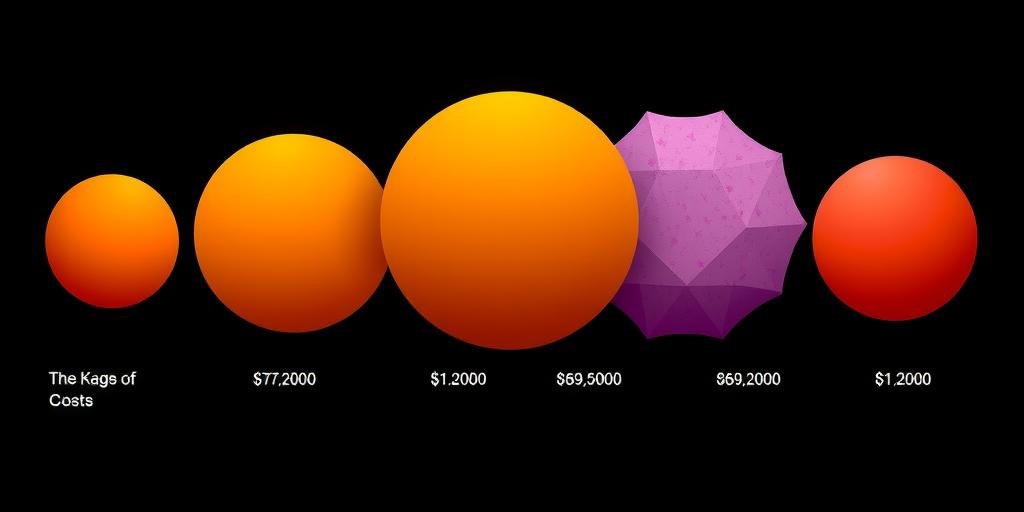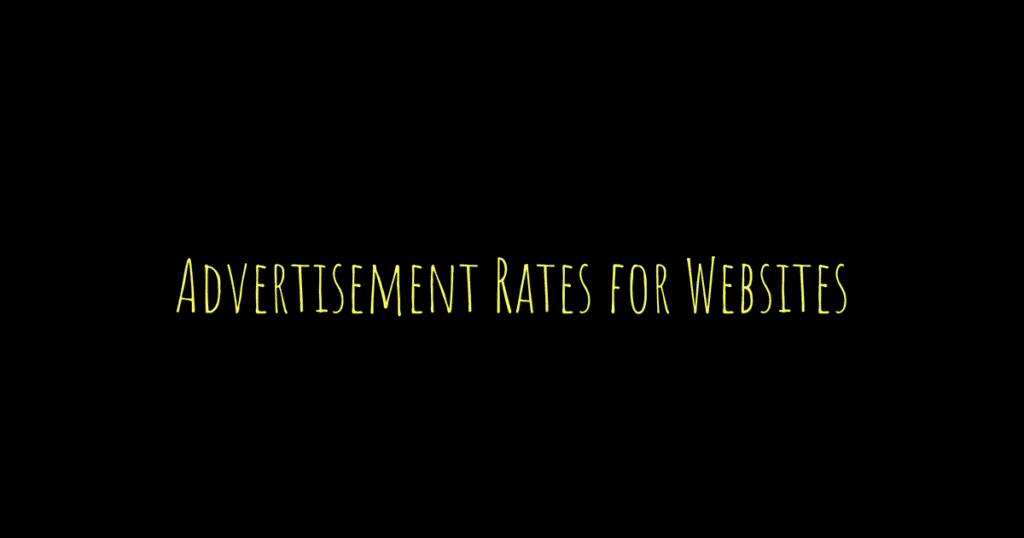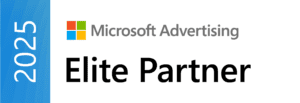Online advertising costs are typically more affordable compared to traditional methods, with an average reach of 1,000 people costing between $3 and $10, whereas traditional advertising starts at around $22. In 2025 projections reveal varying costs across platforms; for instance, Google Ads has a CPC of about $2.32 for search ads and roughly $0.58 for display ads. Other platforms like Facebook and Instagram have their unique pricing models as well. Factors like niche market, website traffic, and audience quality play significant roles in determining these rates. Understanding these metrics can help businesses effectively optimize their spending on digital ad campaigns.
Overview of Online Advertising Costs

Online advertising costs are typically more affordable than traditional advertising methods. For instance, to reach 1,000 people online, advertisers can expect to pay between $3 and $10, whereas traditional advertising can cost upwards of $22 for the same reach. This significant difference makes online platforms appealing for businesses of all sizes. Advertisers can choose from various cost models such as CPM (Cost per Mille), where they pay for every 1,000 impressions, or CPC (Cost per Click), where they only pay when someone clicks on their ad. The cost can vary widely based on the platform and industry. For example, in competitive industries like legal or finance, the average CPC can be much higher than in less competitive niches. Overall, the lower costs associated with online advertising allow for flexible budgeting and the ability to target specific audiences, making it an attractive option for marketers.
Average Costs by Platform (2025 Projections)

In 2025, the landscape of online advertising will continue to evolve, with varying costs across platforms. Google Ads remains a dominant player, with search ads projected to have an average cost per click (CPC) of $2.32, while display ads are expected to see a lower CPC of $0.58 and a cost per mille (CPM) of approximately $3.12. Facebook Ads will likely maintain a competitive edge with an average CPC of $1.72, a cost per action (CPA) around $18.68, and a CPM close to $10. Instagram, known for its visual appeal, is expected to have a higher CPC of $3.56 and a CPM of about $8.96. LinkedIn, targeting professionals, will command an average CPC of $5.26 and a CPM around $7.85. For businesses looking to engage audiences on Twitter, the costs are lower, with an average CPC of $0.38 and a CPM of $6.46. These projections highlight the diverse pricing structures across different platforms, allowing advertisers to choose based on their budget and target audience.
| Platform | Average CPC | Average CPM | Average CPA |
|---|---|---|---|
| Google Ads – Search Ads | $2.32 | N/A | N/A |
| Google Ads – Display Ads | $0.58 | $3.12 | N/A |
| Facebook Ads | $1.72 | $10 | $18.68 |
| Instagram Ads | $3.56 | $8.96 | N/A |
| LinkedIn Ads | $5.26 | $7.85 | N/A |
| Twitter Ads | $0.38 | $6.46 | N/A |
Cost Models in Online Advertising
Online advertising employs various cost models that help advertisers choose how they want to pay for their campaigns. The most common model is CPM, or Cost per Mille, where advertisers pay for every 1,000 impressions their ads receive. This model is beneficial for brand awareness campaigns, as it focuses on reaching a larger audience without necessarily driving immediate clicks. Another popular model is CPC, or Cost per Click, where advertisers only pay when someone clicks on their ad. This is advantageous for advertisers looking for direct interactions and higher engagement with their target audience.
CPA, or Cost per Action, is another effective model where advertisers pay only when a specific action is completed, such as a purchase or sign-up. This model is often preferred for performance-driven campaigns, as it ties costs directly to measurable results. Additionally, flat-rate pricing is an option where advertisers pay a fixed fee for ad space, regardless of how many clicks or impressions the ad generates. This model can provide predictability in budgeting, but it may not always reflect the value generated from the ad.
Each of these models caters to different advertising goals, and the choice largely depends on the campaign’s objectives, whether it’s increasing brand visibility or driving specific actions.
Factors Influencing Advertising Rates
Several factors influence the rates for advertising on websites. One of the most significant is the niche of the website. For instance, websites in high-stakes industries like legal or finance often command higher advertising rates due to the potential value of leads in these sectors. Additionally, the volume of traffic a website receives plays a crucial role; sites with higher visitor counts can charge more for ads because they offer greater exposure to advertisers.
Content quality also impacts advertising rates. Websites that provide high-quality, engaging, and relevant content tend to attract more visitors and keep them on the site longer, which increases the value of ad placements. For example, a blog with in-depth articles on a popular topic may attract a dedicated audience, making it more appealing to advertisers.
Demographics of the audience are another key factor. Advertisers are often looking for specific age groups, interests, or geographic locations. A site that effectively reaches a desirable demographic can negotiate higher rates. For instance, a website aimed at affluent millennials may have higher rates than one targeting a broader, less specific audience.
Finally, advertiser competition can push rates higher. If multiple advertisers want to place their ads on a popular website, this can lead to an auction-like scenario where rates are bid up. Therefore, understanding these factors is essential for website owners looking to set competitive advertising rates.
- Website traffic and visitor demographics
- Ad placement and visibility
- Industry competition
- Seasonal trends and market demand
- Website content quality and relevance
- Historical performance data of past ads
- Geographic targeting and reach
Industry-Specific Insights on Advertising
Different industries experience varying costs when it comes to online advertising. For instance, the legal sector is known for its high competition, leading to an average cost per click (CPC) of $5.88. This is significantly higher than industries such as finance and insurance, which averages a CPC of $3.72. Consumer services also see a notable CPC of $3.77. These figures highlight how certain niches can command higher advertising rates due to the value they provide to advertisers.
Small businesses tend to allocate around $584 per month for digital advertising, which is a fraction of what larger corporations might spend. In stark contrast, large companies often invest upwards of $10,000 each month. This disparity showcases how budget and scale can influence advertising strategies and rates across different business sizes.
Additionally, understanding the audience demographics is crucial for pricing ads effectively. Advertisers are more likely to invest in websites that reach their target demographics, making it essential for website owners to clearly define and communicate their audience. This could mean the difference between attracting more advertisers and being overlooked.
Popular Ad Formats for Websites
Banner ads are among the most common and versatile ad formats used on websites. They come in various sizes and can be placed in different positions on a webpage, making them easily customizable for different sites. Video ads are gaining popularity due to their ability to capture attention and engage users effectively. These ads often result in higher engagement rates compared to static formats. Native ads are designed to blend seamlessly with the surrounding content, offering a less intrusive experience for users and often leading to higher click-through rates. Interactive ads invite users to participate actively, which can enhance engagement and create a memorable experience. For example, a quiz or a game can keep users on the site longer while promoting a product or service.
Metrics to Track for Effective Advertising
Tracking the right metrics is crucial for optimizing ad performance. One of the key metrics is the CTR (Click-Through Rate), which indicates how effective your ads are in driving clicks. A higher CTR means your ad is resonating with your audience. For example, if you run a campaign with 1,000 impressions and receive 50 clicks, your CTR would be 5%.
Another important metric is the conversion rate, which measures the percentage of users who take a desired action after clicking on your ad. If 10 out of those 50 clicks resulted in a purchase, your conversion rate is 20%. This metric helps you understand how well your ad leads to actual sales or sign-ups.
The viewability rate is also essential, as it ensures that your ads are actually seen by users. Ads that are not viewable do not contribute to engagement or conversions, so tracking this helps you assess the effectiveness of your ad placements.
Finally, reach indicates the total unique individuals exposed to your ad. Understanding your reach can help you gauge the overall impact of your advertising efforts and tailor your strategies to effectively engage your target audience.
Recommendations for Pricing Ads on Websites
To effectively price ads on your website, start by identifying the most valuable spots on your pages using heatmaps. This will help you understand where users are most engaged and likely to interact with ads. Next, research industry benchmarks to set competitive rates that align with what others in your niche are charging. Keep an eye on your traffic metrics; if your visitor numbers increase, consider adjusting your ad pricing accordingly to reflect the higher demand. Additionally, experiment with different pricing models such as CPM, CPC, and flat rates to discover which one yields the best results for your site. For example, if your site has high engagement rates, a CPC model might be more lucrative than a flat rate. Regularly review and adapt your strategies based on performance data to optimize revenue.
Frequently Asked Questions
1. What factors affect advertisement rates for websites?
Advertisement rates can vary based on factors like website traffic, audience demographics, the niche of the website, and the placement of the ads.
2. How can I determine the right advertisement rate for my website?
To find the right advertisement rate, consider analyzing similar websites, understanding your audience’s value, and reviewing pricing models like CPM or CPC.
3. Is there a standard way to calculate ad space on my site?
While there’s no one-size-fits-all method, you can measure ad space based on dimensions, visitor engagement, and the type of ads you’re offering.
4. What type of ads can I sell on my website?
You can sell various ad types, including banner ads, sponsored posts, affiliate links, and video ads, depending on your website’s format and content.
5. Can the location of an ad on my website influence its revenue?
Yes, the location of an ad can significantly impact its performance; ads placed in high-visibility areas often generate more clicks and better revenue.
TL;DR Online advertising costs are generally lower than traditional methods, with average costs ranging from $3-$10 to reach 1,000 people online. By 2025, Google Ads and Facebook Ads are projected to have average CPCs of $2.32 and $1.72, respectively. Key cost models include CPM, CPC, CPA, and flat rate. Factors influencing rates include niche, traffic, content quality, and audience demographics, with higher CPCs seen in industries like legal and finance. Popular ad formats are banner ads, video ads, native ads, and interactive ads. Tracking metrics like CTR and conversion rate is essential for effectiveness. Recommendations for website ad pricing involve using heatmaps, researching benchmarks, and adjusting based on traffic. Online advertising presents flexible and cost-effective options for targeting specific audiences.



